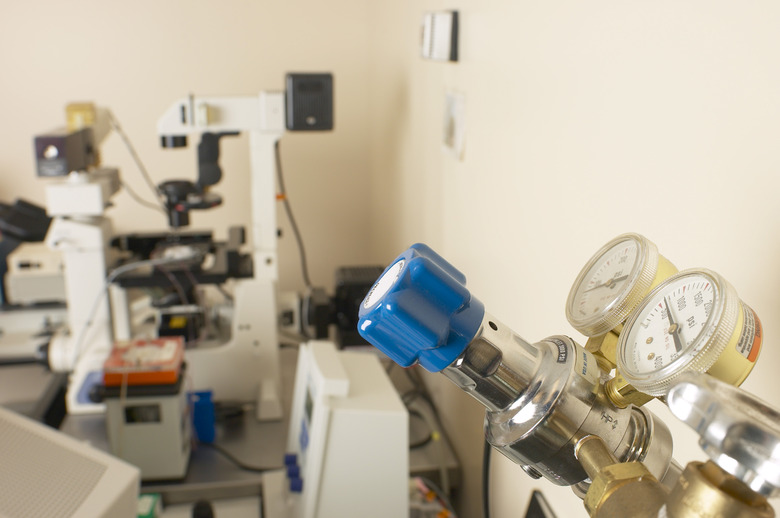How To Calculate Transmembrane Pressure
Transmembrane pressure is defined as the difference in pressure between two sides of a membrane. It is a valuable measurement because it describes how much force is needed to push water (or any liquid to be filtered — referred to as the "feed") through a membrane. A low transmembrane pressure indicates a clean, well-functioning membrane. On the other hand, a high transmembrane pressure indicates a dirty or "fouled" membrane with reduced filtering abilities. The ideal transmembrane pressure varies for different membranes and is usually available from the company that produced or distributed your particular membrane.
Step 1
Place the sensing end of your pressure transducer into the feed (the solution that is being filtered) on the outside of the membrane. Read the value displayed on the pressure transducer and write it down. This is the feed pressure.
Step 2
Measure the pressure of the retentate. The retentate is the part of the feed that did not pass through the membrane the first time. It is collected into the feed reservoir to be delivered to the membrane again. Place the pressure transducer in the retentate between the outside of the membrane and the feed resevoir. Write down the measurement. This is the retentate pressure.
Step 3
Measure the pressure on the opposite side of the membrane. The last two measurements were taken on the outside of the membrane, in the feed and retentate. This measurement is taken on the inside of the membrane, in the permeate, the filtered fluid. Measure the pressure with your transducer by gently placing the sensing end in the permeate. Read the value on the pressure transducer and write it down. This is the permeate pressure.
Step 4
Using your calculator, add the values for the feed pressure and the retentate pressure. Divide the sum by two and subtract the permeate pressure. The result is the transmembrane pressure.
Things Needed
- Pressure transducer
- Pen or pencil
- Paper
- Calculator
TL;DR (Too Long; Didn't Read)
To ensure accurate readings from your pressure transducer, place your membrane setup on a stable, level surface.
Transmembrane pressure is generally described in psi or pounds per square inch.
Warning
Never allow the sensing end of the pressure transducer to come into direct contact with the membrane. Doing so can result in inaccurate readings. In some cases it may also damage the membrane, particularly if it is thin.
Cite This Article
MLA
Miller, Erin. "How To Calculate Transmembrane Pressure" sciencing.com, https://www.sciencing.com/calculate-transmembrane-pressure-8741407/. 24 April 2017.
APA
Miller, Erin. (2017, April 24). How To Calculate Transmembrane Pressure. sciencing.com. Retrieved from https://www.sciencing.com/calculate-transmembrane-pressure-8741407/
Chicago
Miller, Erin. How To Calculate Transmembrane Pressure last modified March 24, 2022. https://www.sciencing.com/calculate-transmembrane-pressure-8741407/
